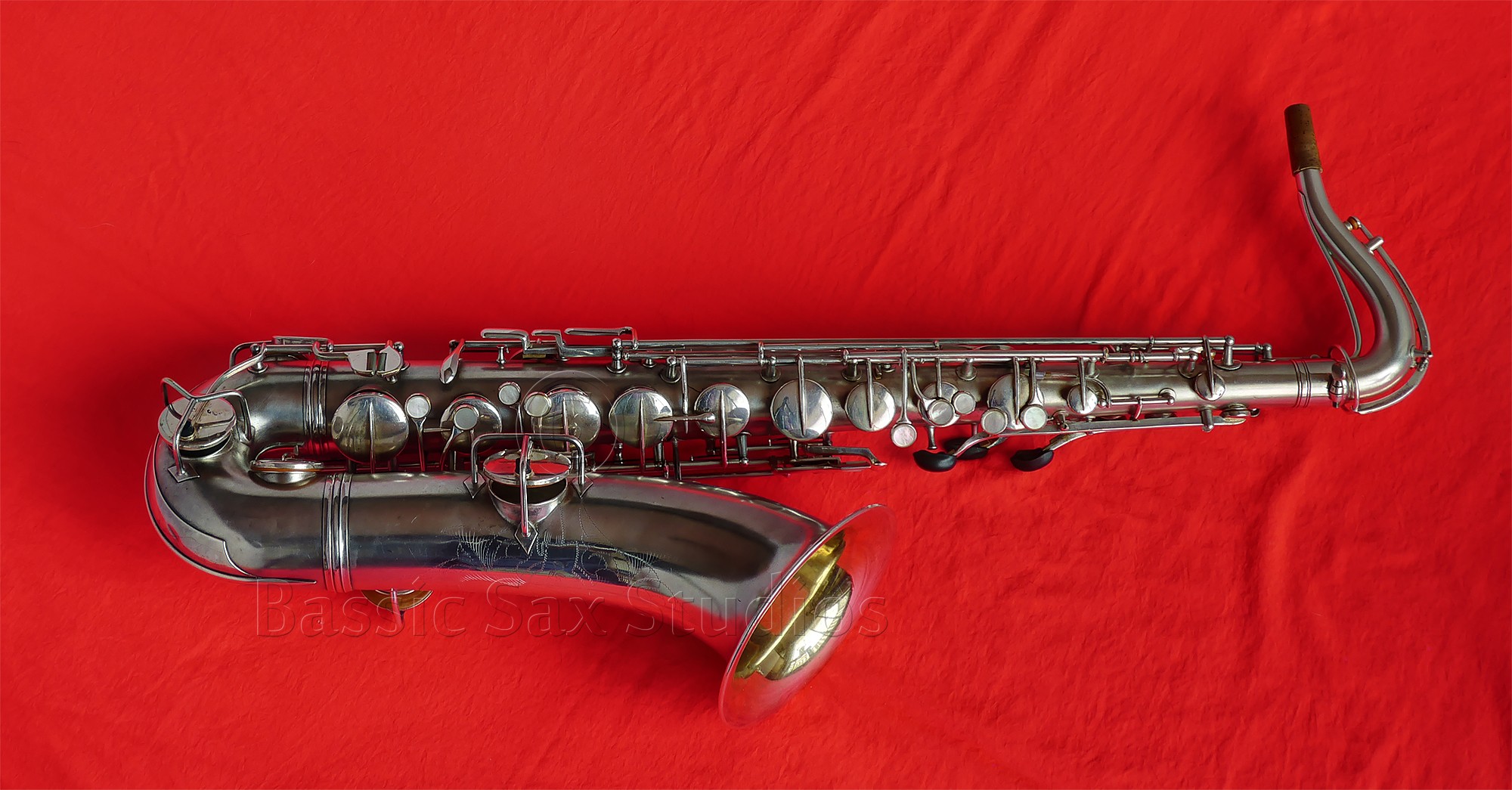
It’s fall, and those of you who have been following my website for years can probably predict what happens often in the fall: I write about a new-to-me horn. It’s almost like I feel I need to take one in before the Northwest’s cold, damp, winter rains settle in. My studio has a Valor gas fire place, so everyone—our two black cats, my “girls”, horns, and of course me—will all be nice and toasty warm over the next few months while we get pounded with our wet, winter weather.
At first blush fall 2019 appears no different than the one of 2018, 2017 et al. The difference this year, is that I have had this horn for months now, but due to the shit storm that I found myself in during the summer, I never had a chance to write about this interesting Conn New Wonder Series I.
How I ended up with a Conn New Wonder Series I tenor
When I started grade 8, I met a man who I would end up remaining friends with my entire life. My junior high school band teacher played tenor saxophone, clarinet, and flute. He was also my first private saxophone teacher. Although he had a Mark VI, he also had a silver Conn tenor that he occasionally brought to school when his Selmer was in the shop.
Fast forward to spring of this year when Kenton finally decided he wanted a second Mark VI as a back-up horn. I connected him with a musical colleague of mine who had a minty, closet VI that needed a player. This left the Conn New Wonder Series I needing a home.
Never wanting to see a vintage horn in need of a good home, Kenton’s tenor came to live with me. I would be lying if I didn’t say this horn has some pretty sentimental value to me. It means more to me than many of my vintage babies since it belonged to the man who initially inspired me, and got me going on saxophone the right way.
This New Wonder’s back story
Based on published serial # charts this New Wonder is from 1922-23, since its serial is 89XXX. When Kenton was 15 years old, [perfectpullquote align=”right” bordertop=”false” cite=”” link=”” color=”” class=”” size=””]If I had had to start on a Conn New Wonder, Martin Handcraft, or Buescher True Tone—all horns I own and love to use now—I’m not sure I would have kept playing.[/perfectpullquote] he was taking clarinet lessons, but his teacher also taught the saxophone. Kenton was really interested in learning how to play sax, and one day this silver saxophone was lying there tempting him. Although the horn was more than 40 years old already by that time, it was in its original case, and shiny as a hubcap.
Kenton didn’t have the money to buy the sax outright, but his teacher let him pay for it through instalments. Kenton had a paper route, so he gave all the money he made through his job to his teacher until the tenor was paid off. Kenton played that sax for a few years until he bought a new Mark VI in 1967—the same one he still uses today.
I have played this Conn on and off over the 35 or so years that I’ve known Kenton. Before I became proficient in playing vintage saxophones, I remember finding this New Wonder being a pinky buster. I also remember thinking: This is the most awkward horn I have ever played in my entire life.
Sidebar
When parents ask me if a vintage horn would be good for their child just starting out, this is exactly why I say: No.
If I had had to start on a Conn New Wonder, Martin Handcraft, or Buescher True Tone—all horns I own and love to use now—I’m not sure I would have kept playing. Vintage horns are a speciality that should not be foisted upon students just learning, or players who are anything less than intermediate players.
Vintage saxophones simply require a lot of finessing and good chops to play them properly. However, once mastered, vintage horns are unique, lovely instruments that are unmatched by today’s mass-produced schlock. There, I said it. I’m sure I’ll take some heat for that. ![]()
Getting back to the Conn New Wonder Series I tenor
When I got the horn in late spring it needed some work. I took it to my tech and he tweaked it for me so I could use it for my month long stint as Tenor 1 in the big band I play in. Unfortunately I never did get to use it for the concert in the park, because the socket is worn out. David tried to tighten it as best as he could, but the neck still tends to travel—usually at the most inopportune times—like before a solo.
Right now David and I are hunting for a donor horn. He has a couple New Wonder altos in the back as parts horns, but no tenors that are easily visible. Now that all the rental stock is nearly out though, I can dig around in the back room and look through all the old cases. Maybe I’ll find one yet. Fingers crossed. In the meantime, the New Wonder does get to come with me to rehearsals, and I use it at home.
The New Wonder has a huge, fat, loud tone. It doesn’t have the certain something that my Martin Handcraft has, but it is more spread in tone, and capable of more volume than the Martin.
I use my usual vintage Dukoff MPs and Légère Signature Series reeds. This combo works great on this nearly antique Conn. With this set up the Conn’s p and pp are lovely, and its subtone sublime.
But where’s the sax porn???
Since this is a special horn, I took quite a few HDR photos of it. For those of you looking for sax porn, you come to right place. 😉
The Coles Notes of the Conn New Wonder
Years ago when my buddy Pete Hales still owned the original saxpics, he wrote what is still arguably the most comprehensive history about Conn saxophones. It is from Pete’s original work on this brand that I offer up the following points about Conn’s New Wonder saxophones.
And yes, before someone says something, much of this is verbatim. So in the spirit of intellectual property, you can throw imaginary quotation marks around the following while reading the next section. ![]()
- A 1918 catalogue references the introduction of a straight soprano in E flat and a straight soprano in C. This catalogue also makes mention of the Conn Microtuner and the Conn Resopad, both hailed as significant advances. These horns are referred to by Conn as “New Wonder” models. Conn saxophones of this era were seen with both soldered and drawn tone holes.
- The drawn tone holes are referenced by a patent engraved on the body tube—1,119,954 December 8, 1914—which was actually held by flute maker William S. Haynes, and licensed to Conn. Rolled tone holes were introduced around 1917 on the alto, although straight tone holes were often found on the other pitched horn for a few more years.
- The 1922 catalogue saw the re-introduction of the straight B flat soprano and the Conn Vacuum pad, which was designed to be installed without adhesives. The straight neck C Melody also made its debut in this year. During this period, Conn saxophones were often seen with spectacular engravings, and considerable experimentation was carried out in manufacturing techniques and design improvements. Conn was unique among American manufacturers in that a full time laboratory with a staff of six was maintained to pursue design improvements.
- During this era, Conn began trade-marking names that designated various models. These included Wonder (February 1, 1891); New Wonder (May 1, 1917); Pan American (January 29, 1918), et al.
- The best definition Pete came up for “true” New Wonder horns is that they must have the Haynes patent stamped on the back of them and have rolled tone holes. If these are missing, the horn is a Wonder model.
- Characteristics of New Wonder saxophones:
- Pearl keys appeared around 1917
- Single octave key
- Rolled tone holes (feature found on all pitches around 1919)
- Standard front F altissimo key on alto and tenor
- Horns are now engraved “C.G. Conn, Ltd.”, instead of “C.G. Conn”
- “Smooth” G# key. The nail-file G# is a characteristic of the “Series II” New Wonder horns
Model numbers of the Conn New Wonder
- Models (odd numbers would indicate high pitch—e.g. 11M tenor—and are not included)
- 20M Straight Eb Sopranino (they called it an “Eb Soprano”)
- 2M C Soprano
- 4M Bb Soprano, Curved
- 18M Bb Soprano, Straight
- 6M Eb Alto
- 8M C Melody Tenor
- 10M Bb Tenor
- 12M Eb Baritone (low Bb; low A not available until 1955-ish)
- 14M Bb Bass
Finishes options
Finish Choices (all from a March, 1922 catalogue, unless otherwise marked):
- 000 – Virtuoso Deluxe (introduced around 1922 for the C melody and on all models by the end of 1924 ): “Furnished only on special orders and prices quoted on request.” Heavily gold plated over all, hand burnished over all. Each and every key inlaid with special choice and carefully selected pearls. Highest class hand engraving on bell of instrument, as well as a greater portion of the body, all of which is a special design and of the highest character. (1927 catalogue)
- 00 – Artist’s Special (“Burnished Gold”(1927 catalogue): Heavily gold plated, hand burnished over all, pearl inlaid keys, pearl rollers, bell richly hand-engraved. Inside of bell, engraving background, keys, posts and ferrules hand burnished.
- 0 – Artist Finish (“Satin Gold”): Heavily gold plated over all, pearl inlaid keys and rollers, bell richly hand-engraved. Inside of bell engraving background, keys, posts and ferrules hand burnished.
- 1 – (“Silver & Gold”): Body heavily silver plated, sand blast velvet finish, bell richly engraved, pearl finger tips, pearl rollers. Inside of bell, engraving background keys and ferrules gold-plated and burnished.
- 2 – (“Silver, Gold Bell”): Body heavily silver plated, sand blast velvet finish, bell richly engraved, inside of bell gold plated [and] burnished. [E]ngraving background, keys, posts and ferrules hand burnished. Keys inlaid with pearl and pearl rollers.
- 3 – Quadruple silver plated over all, sand blast finish; interior of bell and points hand burnished, finger tips pearl inlaid, and on saxophones, pearl rollers. On woodwinds this finish symbol represents heavily silver plated keys, posts and rods, hand burnished.(Noted on Conn Loyalist)
- 4 – Highly polished brass throughout, pearl inlaid finger tips and pearl rollers.
- 5 – Gold brass, highly polished, nickel-trimmed. (Noted on Conn Loyalist)
- 6 – Body heavily nickel plated and highly polished, pearl inlaid finger tips, pearl rollers.
CHROME FINISH was the trade name for a coloured enamel finish. Available colours were red, white, blue, green, Old Rose (“dark pink”) and black. This was available as an add-on for any style of plating for a mere $15 extra, in March 1922 dollars.
POLY-CHROME FINISH was the trade name for the CHROME finish, but with added “beautiful designs on bell or body of flowers, vines, etc. in various colors” and cost $25 extra, in March 1922 dollars.
Conn also saw fit to enclose a NOTE: “The Chrome or Poly-Chrome finish will last according to the care given the instrument. Should the owner desire to remove the colored finish, send in the instrument to the factory or obtain our advice on same. The original finish will not be affected by the chrome finish after the latter has been removed.”
In conclusion then
Based on what I paraphrased/quoted from Pete above, you can see why this Conn tenor I got from Kenton in spring is not only a New Wonder, but a Series I.
Conn New Wonder tenor specs
- 10M Bb tenor
- Stamped with Haynes Pat. 1,119,954 December 8, 1914, with corresponding rolled tone holes.
- Serial # 987XX circa 22-23
- Series I since it has a smooth G# key
- Finish 2 Silver, Gold Bell: Body heavily silver plated, sand blast velvet finish, bell richly engraved, inside of bell gold plated and burnished. Engraving background, keys, posts and ferrules hand burnished. Keys inlaid with pearl and pearl rollers.
- Front F key
- Bell engraved with: Made by C. G. Conn Ltd
This is a fun horn to play. Personally, I get a whole lot more out of it than on any of the newer model 10Ms that I have ever played. It simply has more power, colour to its tone, and projection. YMMV of course, and likely will, which is why I don’t recommend these as horns for everyone. However, for the right player, they are fantastic.

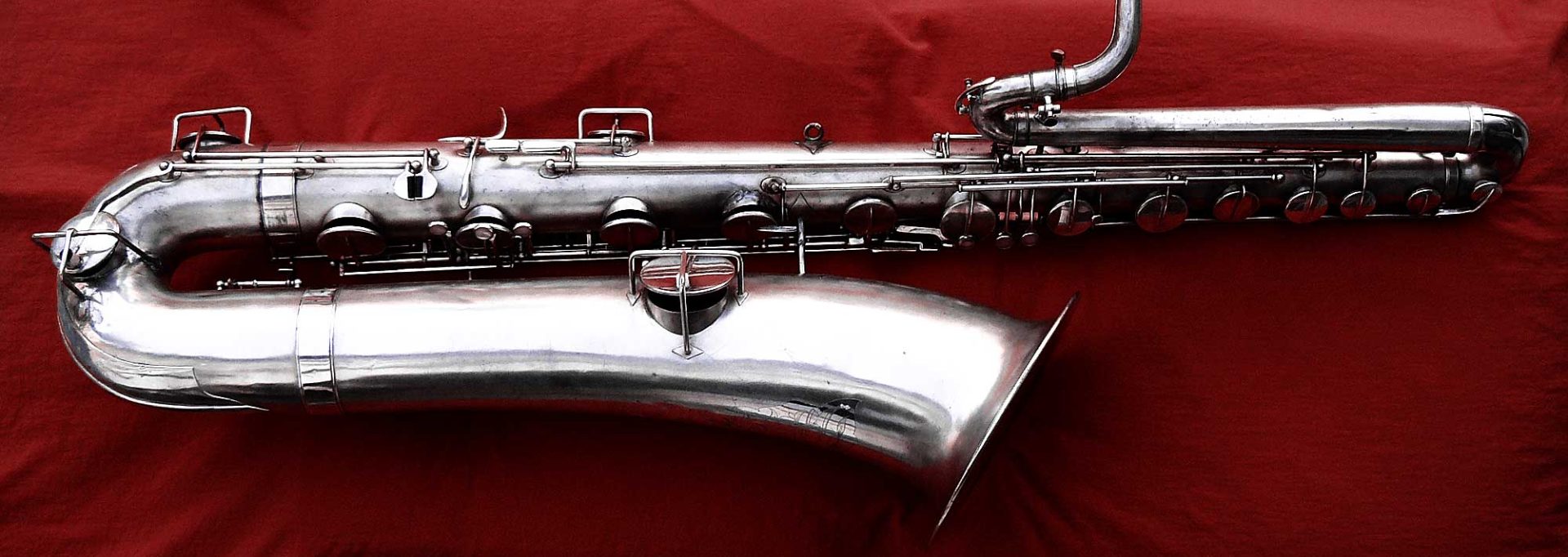
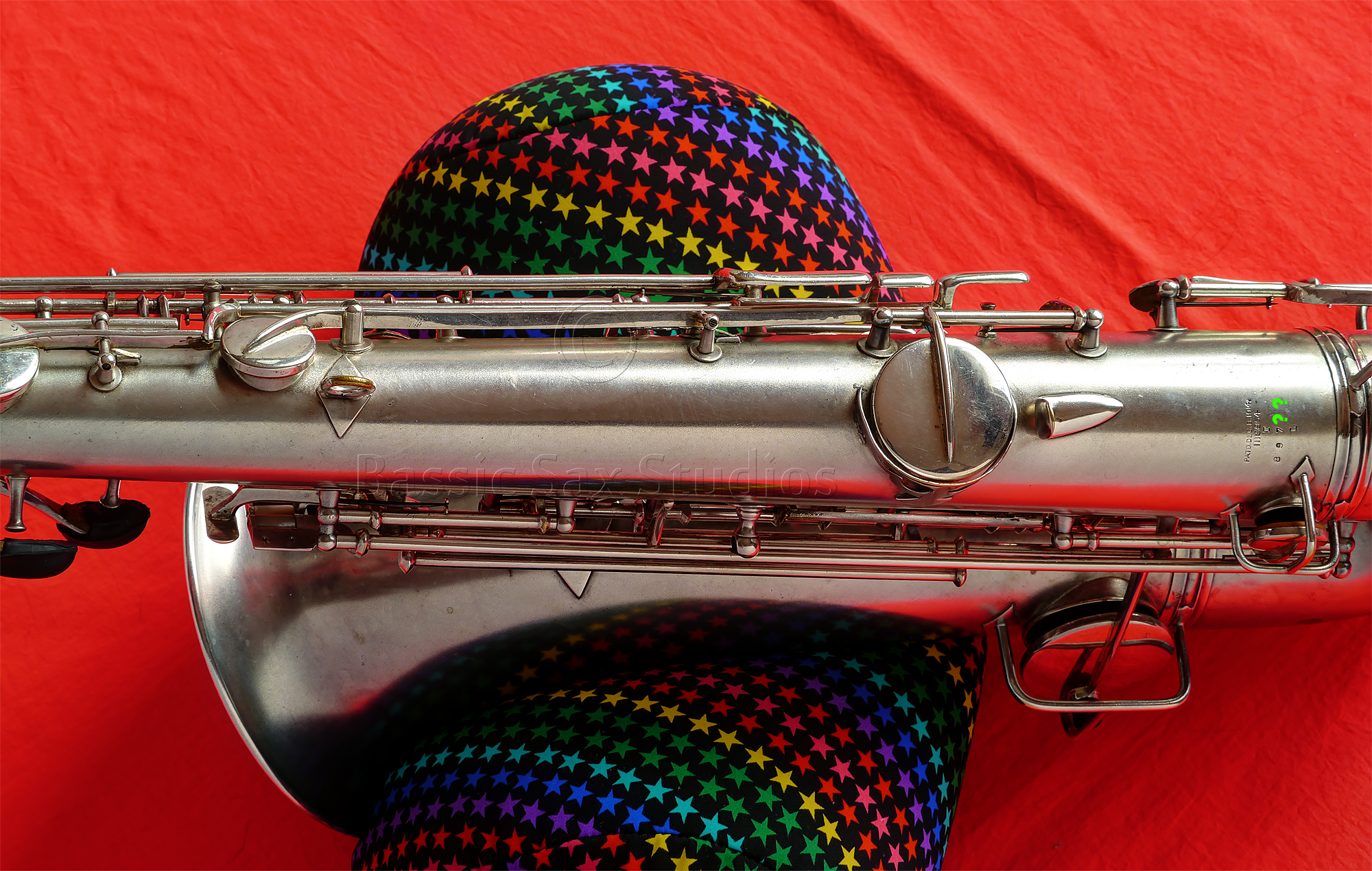

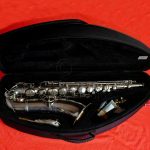
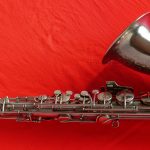
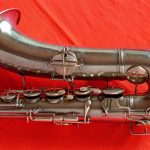


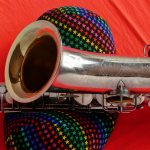
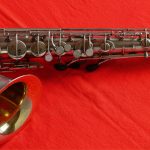
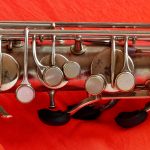
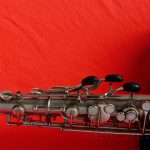
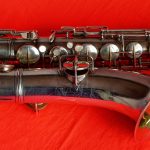
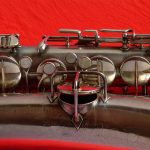
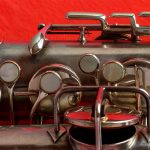
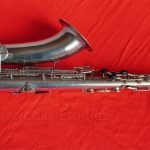

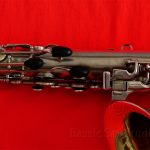
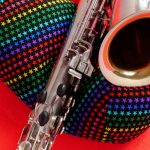
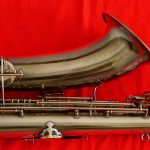
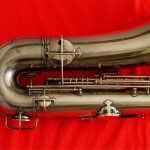
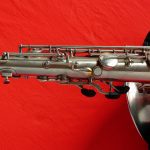
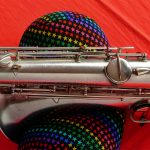
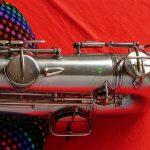

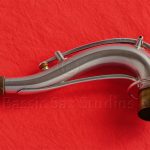
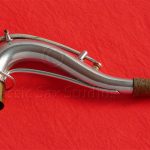

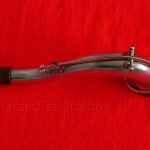
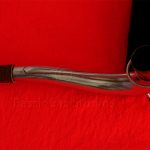

i have a new wonder 1 tenor in brass and the neck also travels – needs a strip of masking tape to plug the gap. love the horn.
great article – found it a very interesting read and especially the personal side of the story.
I believe I have a new wonder 1 conn tenor sax. How can i tell for sure what I would need to know to sell it? I guess I dont want to miss lead anyone or have them recieve it and then have to have them ship it back to me
Well a quick way to find out is to compare it to the photos on this page. The easiest way to tell the difference between a Series I and II is the nail file G# key. If it is smooth like this one, it is a Series I. If it has a crosshatch pattern like the one on another Conn I have, it is a Series II.
That said, whether it is a Series I or II is only part of what you need to know in order to sell a saxophone. There are A LOT of things that could be wrong with a sax which make it it unplayable, or effect its playablity and its value, which if you have limited or no experience with the instrument/make/model makes it hard to sell honestly.
Depending on where you live, what your experience as a player, etc is, you might consider giving it to a music store that does consignments. Consignment rates vary, but can be around 10-20%. However, they will give you an honest estimate of what the horn would sell for, and what work it needs—most vintage saxophones like this usually need at least some, and in some cases need a full overhaul.